1997 marked the debut of Titanic, James Cameron’s $200 million dollar movie that profiled an early 20th century Romeo and Juliet attraction between an itinerant Jack Dawson (played by Leonardo DiCaprio) and high society girl, Rose DeWitt Bukater (played by Kate Winslet). It’s a fictionalized story set within an almost century-old tragedy.
Or so it seems. Did you know that there was an actual J. Dawson as a registered crew member on the doomed R.M.S. Titanic?
Who was this man? Was his story the impetus for Cameron’s blockbuster movie? Or is his life a simple footnote within the Titanic drama?
Unfortunately, J. Dawson didn’t survive the icy Arctic waters on that April night. His body was recovered from the sea one month after the tragedy and buried in a Nova Scotia cemetery. He now rests under the occasional layer of flowers, photographs and movie ticket stubs.
Senan Molony, a journalist and dedicated Titanic researcher, discovered that Joseph Dawson was the son of a failed Irish Catholic priest and worked on the ship as a trimmer. A trimmer is basically a stokehold slave designated to channel coal to the firemen at the furnaces. He was responsible for keeping the black mountains on a level plateau at all times so that no imbalances caused a threat to the trim, or even-keel, of the ship. Yet Joseph’s life leading up to that fateful night followed a series of ironic ups and down that are movie worthy in their own right.
Read the whole story here.


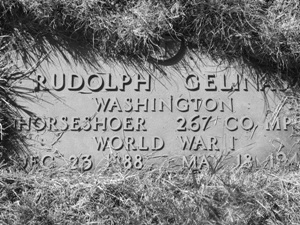

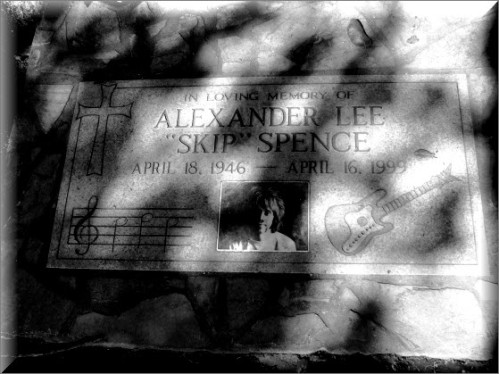
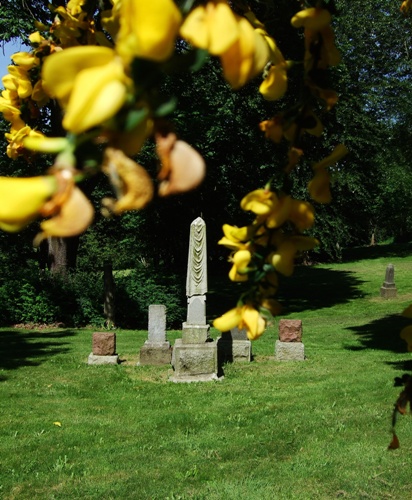

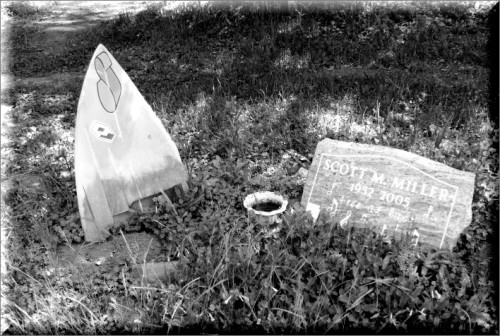















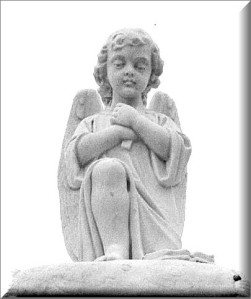














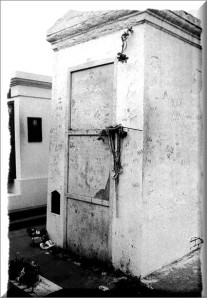
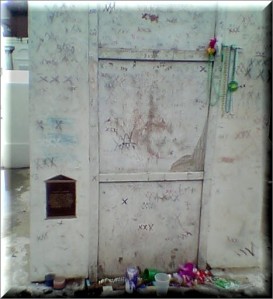
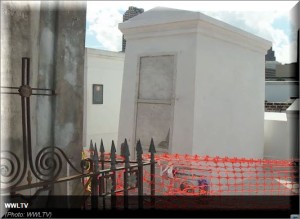









































What was once a tremendous carving…
The San Francisco National Cemetery is located in the northern end of The Presidio and holds a large number of interesting headstones scattered in between the usual military-issue markers. Earlier this year, BTG profiled an immense Book of Life located near one of the roadways and almost impossible to miss.
Dr. Clarence A. Treuholtz: 1876 - 1913
One marker that’s not quite so prominent but offers a poignancy all its own, is the half-destroyed memorial to 37-year old Dr. Clarence A. Treuholtz, a captain in the Army Medical Corp, who served at various Army posts in Alaska, New Mexico, and Arizona – specifically, Fort Apache, a post that later became the home of the Bureau of Indian Affairs in 1923.
There are two particularly sad items of note about this headstone. The first is that while Dr. Treuholtz is buried here, his wife Elizabeth, is not. The second sad note is the blatant vandalism marking the spot.
Once upon a time, this must have been a magnificent carving of an eagle perched on a rocky outcrop. Now, only a broken set of clawed stumps remain.
Share this:
1 Comment
Filed under Commentary, Snapshot Stories, Travel
Tagged as Commentary, Snapshot Stories, Travel